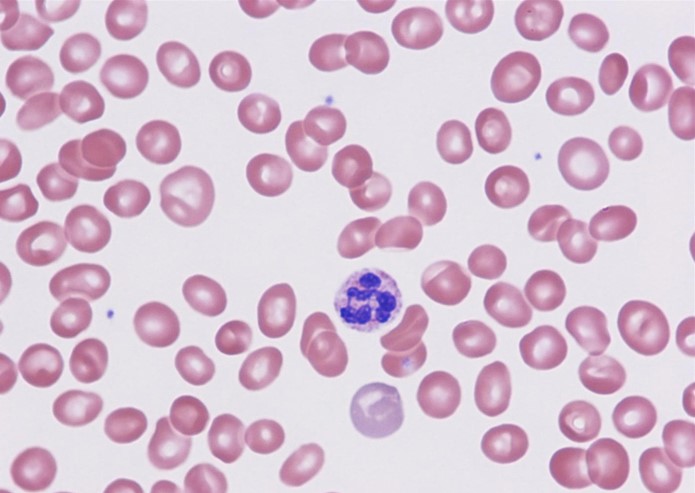A 65-year-old man comes to the office due to a few weeks of progressive exertional dyspnea and fatigue. He has had no chest pain, fever, or cough. The patient has a history of mild aortic stenosis, gastroesophageal reflux disease, obesity, hypertension, and hypercholesterolemia. Temperature is 36.7 C (98 F) , blood pressure is 130/78 mm Hg, pulse is 82/min, and respirations are 16/min. BMI is 28 kg/m2. Pulse oximetry shows 96% on room air. Mucosal pallor is present, but there is no jaundice, lymphadenopathy, or jugular venous distension. Cardiopulmonary examination reveals a 2/6 systolic ejection murmur at the second right intercostal area. The abdomen is soft and nontender; there is no palpable hepatosplenomegaly. Peripheral pulses are normal. Laboratory results are as follows:  Peripheral blood smear is shown below:
Peripheral blood smear is shown below:  Which of the following is most likely responsible for this patient's current condition?
Which of the following is most likely responsible for this patient's current condition?
A) Impaired DNA synthesis
B) Impaired heme production
C) Inadequate erythropoietin production
D) Replacement of bone marrow with fat cells
E) Replacement of bone marrow with fibrosis
F) Traumatic hemolysis
Correct Answer:
Verified
Q267: An 80-year-old woman is brought to the
Q268: A 24-year-old woman is being evaluated for
Q269: A 62-year-old hospitalized woman is evaluated for
Q270: Further evaluation shows decreased von Willebrand factor
Q271: A 28-year-old man is found unresponsive by
Q273: An 8-year-old boy is brought to the
Q274: A 54-year-old hospitalized man develops new-onset slurring
Q275: A 68-year-old woman comes to the emergency
Q276: A 12-month-old boy is brought to the
Q277: A 27-year-old woman, gravida 1 para 0,
Unlock this Answer For Free Now!
View this answer and more for free by performing one of the following actions

Scan the QR code to install the App and get 2 free unlocks

Unlock quizzes for free by uploading documents